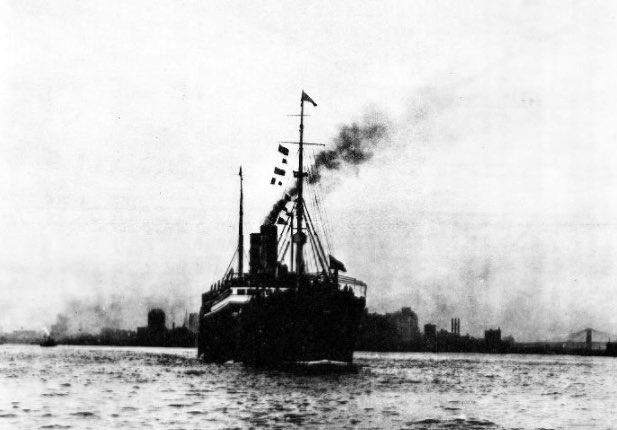
If you have ever been on a cruise ship, you will know that the first order of business is to learn the escape routes, getting to the deck, putting on a life jacket, and how to get onto one of the escape boats. The last time I was on a cruise, the safety drill was not mandatory, but I felt that it was essential to learn. I hope to goodness that if ever you are on a cruise, you will also attend the safety drill and chalk it up to a unique experience instead of a drudgery.
Below is the tragic account of the sinking of the Norge. Nearly 700 lives were lost in 1904.

STORY OF A WRECK
No Marine Tragedy of More Appalling Results or in a Shorter Time
Grimsby, Eng.: A long pile of granite rising sheer out of the Atlantic 290 miles from the Scottish mainland, is now a monument to almost 700 dead.
Bodies wash against the rocks or lie in the ocean bed at its base. Nearby, completely hidden in the water, is the Scandinavian-American liner Norge, which was carrying 800 Danes, Norwegians, Sweeds, and Finns to join relatives or friends in America. Of these only about 130 were saved.
No tragedy of the sea has had more appalling consequences and none has occurred in a shorter time. The passengers were suddenly aroused from their sleep, terrified by the contact of the bows with the solid granite, followed by a grinding, rasping sound as though the hull was being shoved over huge rocks. Then silence, as the clang of bells brought the engines to a stop. Those of the passengers who were standing at the time the steamer struck the rocks were thrown against the bulkheads or on the decks and had not recovered their feet when a voice gave the order, “All hands on deck; men, hurry or you may sink.”
Immediately there was a rush for the narrow companionways and men, women and children pushed and struggled and made every effort to reach the deck, where the boats swing from the davits. Many persons retaining their presence of mind seized life preservers, only to find in some instances that the strings were rotten and they could not quickly be put around their bodies. Those who reached the deck saw the nose of the Norge directly pinned against the rock. It remained there only a few minutes, for Capt. Gundell, commanding, gave the order to have the engines reversed. Some of the engineer’s force had relatives among the passengers and after seeing them safely to the boats they heroically returned to their stations below.
Slowly the ship backed off and as she gained way it was found that water was pouring into her hold. This announcement called in Scandinavian and presaging death added to the supreme fright and agony.
Source (1904, July 08). Story of a wreck. The Rice Belt Journal, p. 2.

